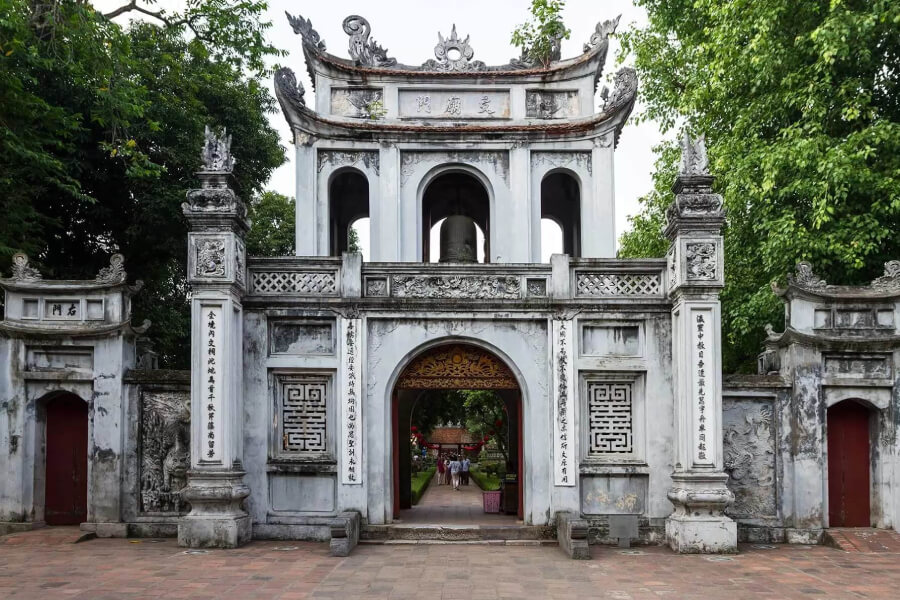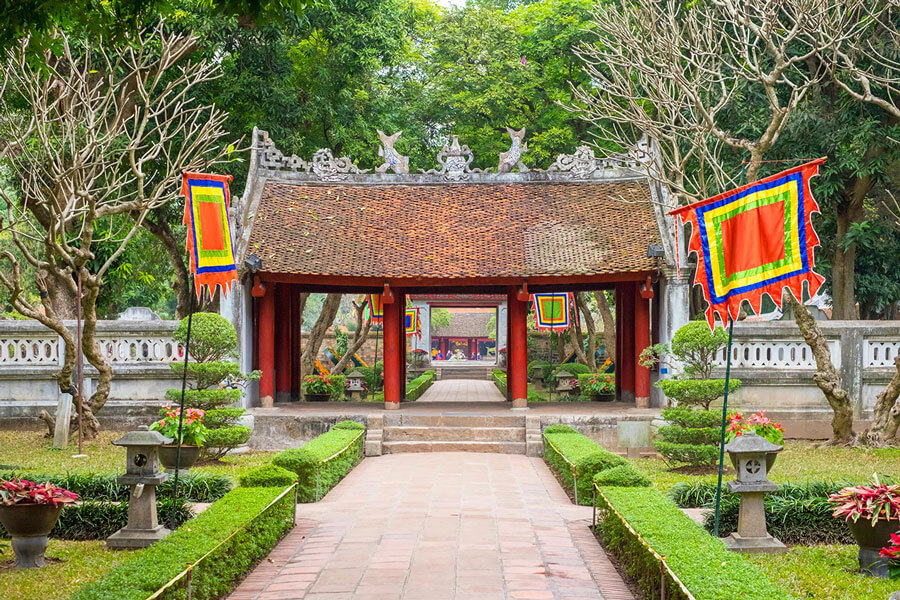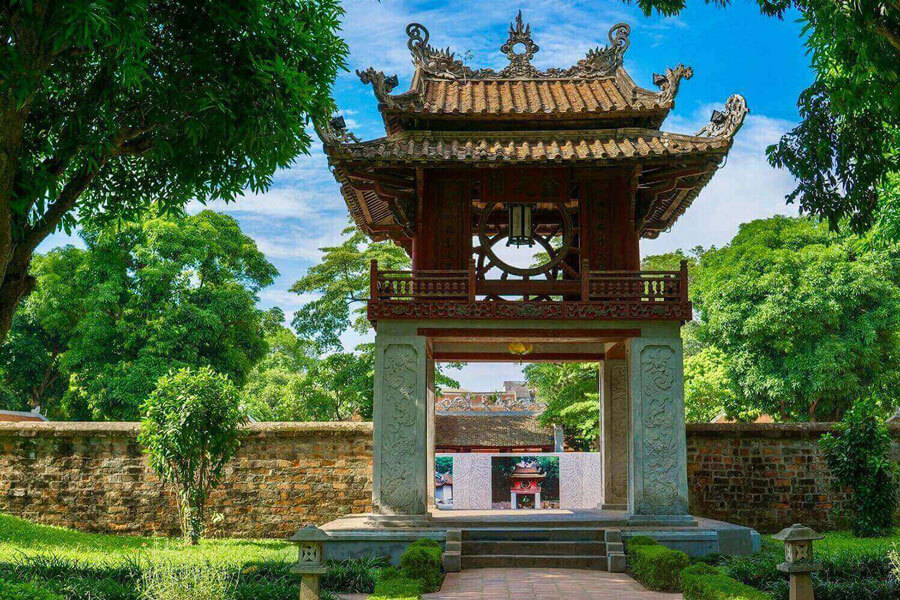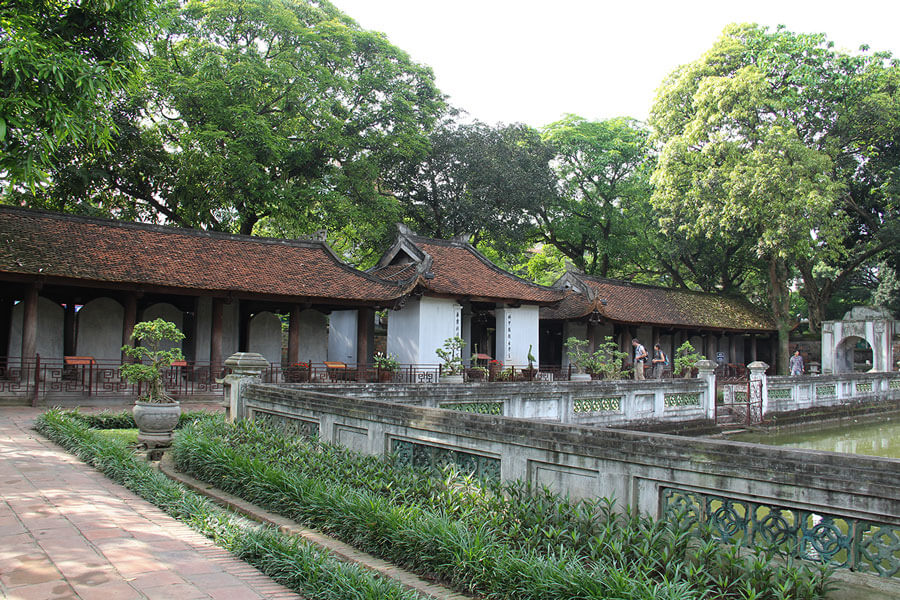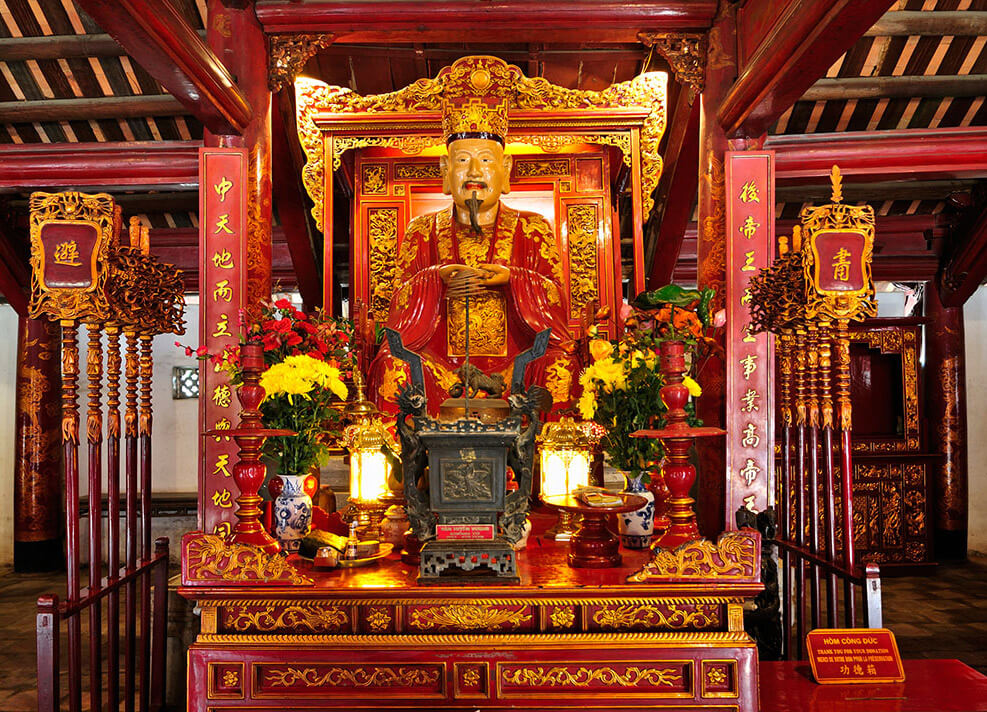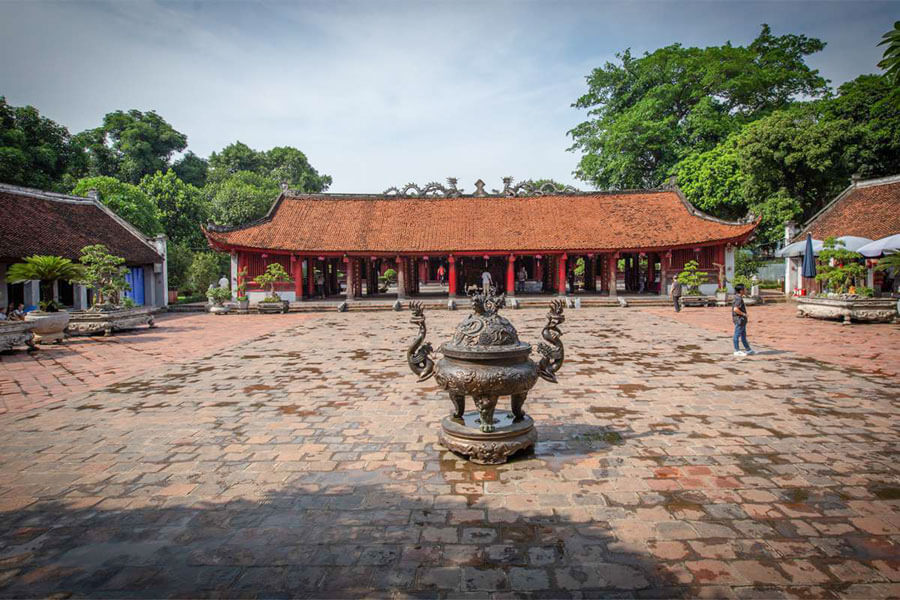The Temple of Literature located in Hanoi, Vietnam known as “Văn Miếu” in Vietnamese, holds immense historical and cultural significance. It stands as a testament to Vietnam’s rich academic heritage, as it was the country’s first university. Established in 1070 during the Ly Dynasty, the Temple of Literature continues to be a revered site, attracting locals and tourists alike. Let’s delve into the fascinating history and significance of this ancient educational institution. Viet Dan Travel – Trusted Vietnam DMC will provide information about the Temple of Literature in this article.
A Brief History of the Temple of Literature
The Temple of Literature was founded in 1070 by Emperor Ly Thanh Tong, the third ruler of the Ly Dynasty, who dedicated it to Confucius. Initially established as a temple to honor Confucius and other scholars, it later evolved into Vietnam’s first national university. The temple served as a place of worship and learning, attracting scholars from across the country. Throughout its history, the Temple of Literature underwent several expansions and renovations, contributing to its grandeur and magnificence. The site was expanded during the reigns of subsequent dynasties, such as the Tran, Le, and Nguyen dynasties, adding more structures and features to the complex.
Architectural Marvels of the Temple of Literature
The Temple of Literature is a prime example of traditional Vietnamese architecture, characterized by its grandeur and harmonious design. The complex is divided into five main courtyards, each serving a distinct purpose. The first courtyard, known as Dai Trung Mon (Great Middle Gate), welcomes visitors with its imposing structure. Beyond this gate lies the second courtyard, which features the Khue Van Cac pavilion, an iconic symbol of the Temple of Literature.
Dai Trung Mon (Great Middle Gate)
The entrance gate of the Temple of Literature, known as Dai Trung Mon, is an impressive structure that welcomes visitors. It is adorned with intricate wood carvings, featuring motifs such as dragons, phoenixes, and clouds. The gate is symbolic of the importance and significance of the temple as a center of learning and knowledge.
Khue Van Cac (Constellation of Literature Pavilion)
Located in the second courtyard, the Khue Van Cac pavilion is one of the most iconic symbols of the Temple of Literature. The pavilion is a three-level structure with a sloping roof, supported by delicate columns. It is beautifully reflected in the surrounding pond, creating a picturesque scene. The pavilion represents aspirations for knowledge and literary pursuits.
Thien Quang Well and Doctor Steles
The Thien Quang Well, located in the Temple of Literature, served as a sacred water source for purification rituals before important ceremonies. It symbolized readiness and spiritual cleansing. The Doctor Steles, stone tablets atop stone turtles, honored scholars who excelled in royal examinations. Inscribed with calligraphy, they celebrated academic excellence and inspire future generations. These treasures within the Temple of Literature embody Vietnam’s reverence for knowledge, spirituality, and intellectual pursuits.
Dai Thanh Sanctuary
Situated in the central area of the temple complex, the Dai Thanh Sanctuary is a sanctuary dedicated to Confucius and other prominent scholars. It houses statues and shrines, including a statue of Confucius himself, surrounded by his disciples. The sanctuary features intricate architectural details, with ornate carvings and vibrant colors, reflecting the importance of Confucian teachings in Vietnamese society.
Thai Hoc (House of Ceremonies)
The Thai Hoc, also known as the House of Ceremonies, is the fourth courtyard within the Temple of Literature. This area was originally an academy where important ceremonies and rituals were conducted. The building showcases traditional Vietnamese architecture, with its curved roofs, red lacquered pillars, and delicate decorations. It offers a glimpse into the ceremonial traditions and rituals associated with education and scholarly pursuits.
Symbolism and Cultural Significance
The Temple of Literature holds immense symbolic and cultural value for the Vietnamese people. It represents the pursuit of knowledge, scholarship, and the importance of education in Vietnamese society. The architecture and layout of the temple complex reflect Confucian principles and Vietnamese traditions. It embodies the harmonious blend of spiritual and intellectual pursuits. Every year, during the Lunar New Year, the Temple of Literature hosts the traditional “Tet Viet,” attracting thousands of visitors who come to pray for success in their academic endeavors. The temple is also a popular spot for graduation ceremonies, symbolizing the completion of educational journeys and the beginning of new chapters in life.
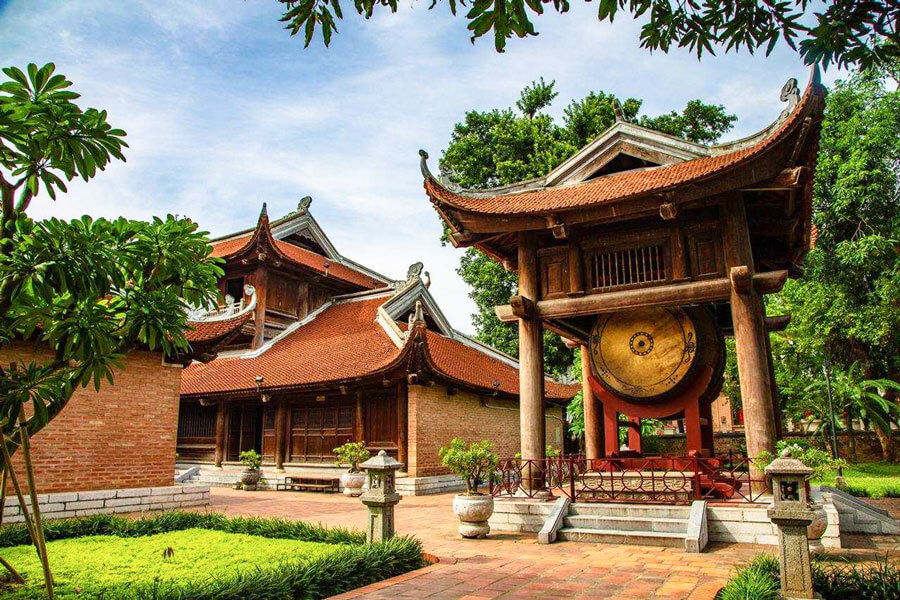
The Temple of Literature stands as a revered historical and cultural site, embodying Vietnam’s rich academic heritage. As the first university in Vietnam, it holds great significance for the Vietnamese people, showcasing their deep reverence for education and knowledge. A visit to the Temple of Literature allows visitors to immerse themselves in the country’s ancient past, marvel at its architectural wonders, and appreciate the profound influence of learning in Vietnamese.

